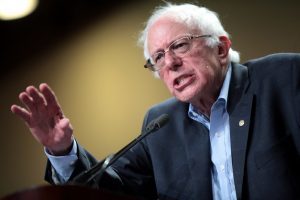Last week, amid the upheaval in the Democratic primaries, the New York Times published a piece on the 1988 efforts of then-mayor Bernie Sanders to establish Burlington as a sister city to Yaroslavl in the Soviet Union. The headline, “As Bernie Sanders Pushed for Closer Ties, Soviet Union Spotted Opportunity,” sounds sinister, but the article provides some insight into the historical moment.
The story itself is interesting but really only ended up on the front page of the Times because Bernie’s run for the White House has been dogged by accusations that Russia favors him as the Democratic nominee and because of his comments about the Castro regime in Cuba. There has been considerable pushback since the article came out. A New Yorker columnist dismissed it as a non-story, citing historian David Brandenberger’s explanation that Sanders’s work differed from the state-scripted messages generally found in propaganda. Less credibly, an RT op-ed taunted the Times for unintentionally making Bernie look like a model diplomat.

Jack F. Matlock Jr., U.S. ambassador during Sanders’s efforts, wrote to the Times calling the piece “a distortion of history” in its implication that the U.S.S.R. sought to instrumentalize Bernie’s efforts for its own ends. This was the period of glasnost, of opening, not the height of the Cold War. Moreover, as the Times itself acknowledged, Sister Cities International had the support of the Reagan White House and had been founded as part of Dwight D. Eisenhower’s People-to-People Program. This is hardly a case of a lefty mayor going rogue.
While both Matlock and Brandenberger disputed that the Soviets sought to use Sanders’s efforts as propaganda, I think the either/or distinction between propaganda and not-propaganda is insufficient to understanding Soviet motives. It obscures the political ends you can see by looking deeper into the history of communism and the American left.
Throughout Soviet history, especially the 1920s-1930s, Soviet leaders were preoccupied with asserting the legitimacy and superiority of their new order through public diplomacy. Historians like Michael David-Fox (Showcasing the Great Experiment) have shown how Soviet leaders enlisted western cultural figures as intermediaries to highlight the accomplishments of the regime. These unofficial ambassadors traveled to the Soviet Union to see their modernized factories and cultural achievements, returning to their homelands with first-hand insights into social and economic modernization. While they were exposed to some of the shortcomings of the Soviet system, they did not witness the full extent of Soviet repression that made possible the industrial achievements of the early Soviet era. It was also not unusual for them to gloss over the unpleasantness in the hopes of promoting peace and advocating for the communist reforms they, as fellow travelers, supported. This is not propaganda in the sense that Brandenberger meant it, but it’s a form of public influence nonetheless.
Naturally, some distinctions need to be drawn between these different points in history. By definition, Soviet aims during the glasnost period were very different from the prior decades, and the Russian government today is distinct from the Soviet regime. Confounding these doesn’t help make sense of the present or past. Still, there are some general lessons worth considering about how states project influence.
Of course, any country wants to show itself in the best light, especially when representing championing a mutually-exclusive worldview. The U.S. did it too, including through Eisenhower’s People-to-People Program. In fact, according to historian Kenneth Osgood, People-to-People had “propaganda” value both domestically and internationally by mobilizing citizens on behalf of their national interests (Total Cold War). The same could be said for the Sister Cities initiative. Despite Bernie’s criticism of Reagan’s Cold War policies, he was also an agent of U.S. “soft power.” It’s to be expected that both the U.S. and the U.S.S.R. were interested in Bernie’s efforts. Both entities had aims that aligned with Bernie’s, and aims that went beyond his.
The New Yorker put it right in calling Sanders’s work innocuous in the context of its times, if a bit naive of the broader geopolitical implications. The story is more interesting, more nuanced, and less sinister than the Times suggests.
